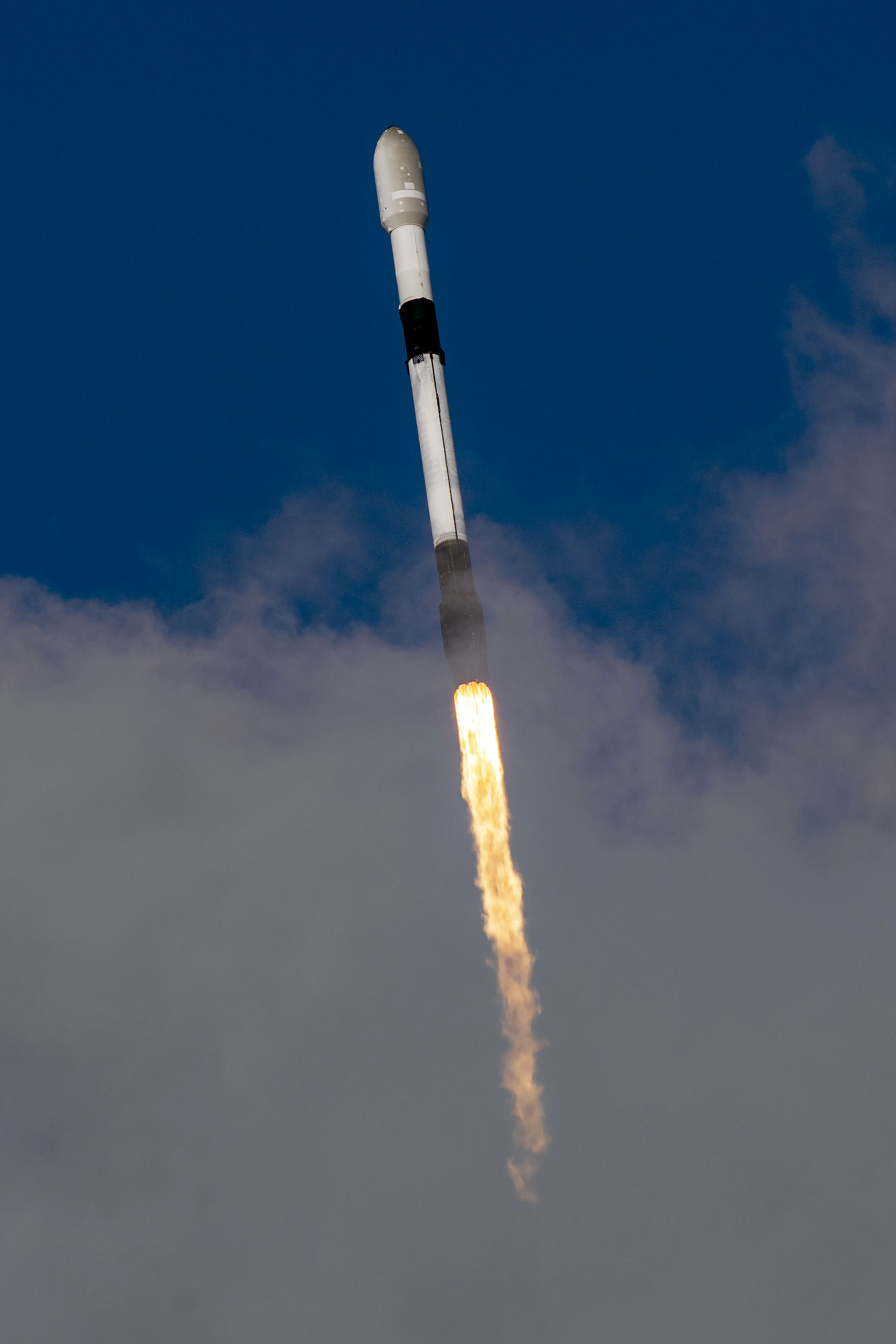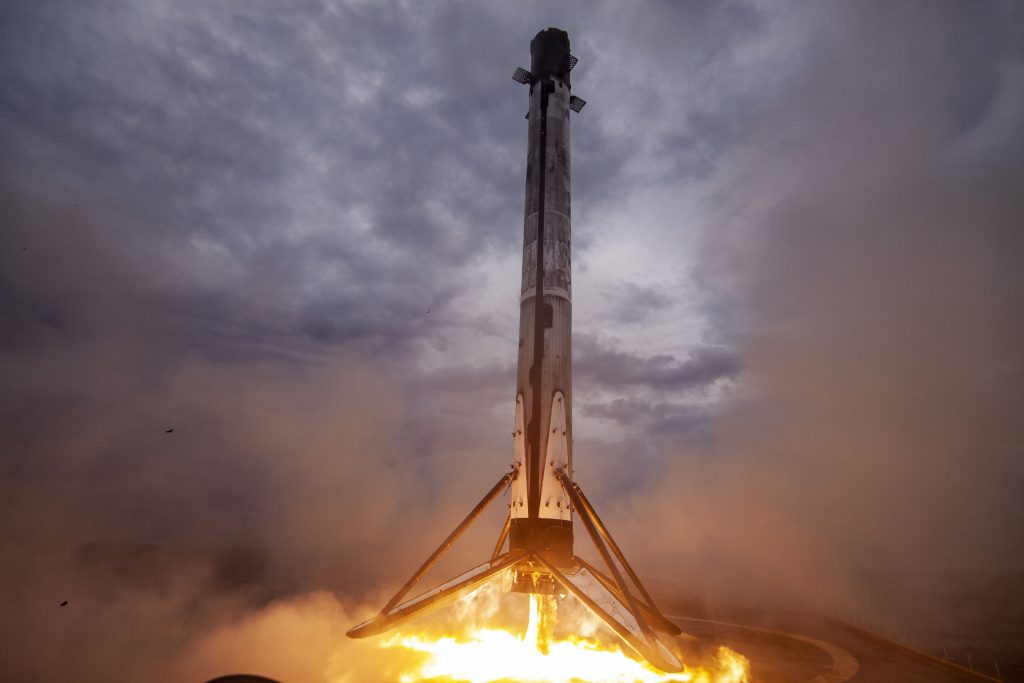Featured Image: SpaceX
Lift Off Time | December 30, 2022 – 07:38:00 UTC December 29, 2022 – 23:38:00 PST |
|---|---|
Mission Name | EROS-C3 |
Launch Provider | SpaceX |
Customer | ImageSat International |
Rocket | Falcon 9 Block 5 Booster B1061-11 |
Launch Location | SLC-4E, Vandenberg SFB, California, USA |
Payload mass | 400 kg (880 lb) |
Where is the satellite going? | Retrograde low Earth orbit |
Will they be attempting to recover the first stage? | Yes |
Where will the first stage land? | Landing Zone 4 (LZ-4) |
Will they be attempting to recover the fairings? | The fairing halves will be recovered from the water downrange |
Are these fairings new? | TBD |
How’s the weather looking? | 70% GO |
This will be the: | – 186th orbital launch attempt in 2022 – 61st mission of 2022 for SpaceX – Last launch of 2022 for SpaceX – 60th mission for Falcon 9 of 2022 – 195th overall Falcon 9 mission – 13th launch from SLC-4E in 2022 |
Where to watch | Official livestream |
What’s All This Mean?
To close out the year, SpaceX will be launching the Earth Resources Observation Satellite (EROS) for ImageSat International. ImageSat is a company jointly founded in 1997 by Isralei Aircraft Industries, EI-Op, and Core Software Technology (CST). The first EROS satellite, EROS A, was launched in December of 2000. The Falcon 9 Block 5 carrying EROS-C3 will launch from the west coast of the Unites States and fly opposite Earth’s rotation, hence “retrograde” low Earth orbit. After boosting the satellite and second stage to the desired altitude, B1061-11 will boost back and land on Landing Zone 4.
EROS-C3
The Earth Resources Observation Satellite has only launched a few times in the 21st century. EROS A launched in December 2000 followed by EROS B in April 2006. The main purpose of the satellite from the start was to film from space a return the video to customers on Earth. In the past some of these customers included the Ministry of Defense of Israel, the Taiwan Defense Ministry, India, and media organizations who wanted footage of the War in Afganistan.

Satellite History
EROS A was launched on a Russian Start-1 launch vehicle to a 480 km (300 mi) sun synchronous orbit, so it’s imaging target is always in daylight. It had an optical resolution of 1.8 meters per pixel and weighed 250 kg (550 lb). The satellites reentered Earth’s atmosphere in July 7, 2006.
EROS B was also launched on a Russian Start-1 rocket, however much later than original planned. Due to difficulty in getting enough commercial customers to sign on, the launch was delayed five years from 2001 to 2006. This satelite hosted upgrade in resolution over it’s predecessor with the ability to image at 70 cm (2.3 ft) per pixel. Originally, a planned total of four EROS B satellites were planned for the constellation, but due to bugetary restrictions was reduced to one.
EROS C was the next iteration of the EROS satellites, but never made it into production. In 2006 it was annocuced that the launch of EROS C would be moved to 2009. More delays pushed it to 2019 before it was eventually cancelled in favor of the EROS NG program.
EROS NG Program
The EROS NG program is a currently active program, which already has two satellites in orbit. There is minimal publically available information on the EROS-C1 and -C2 satellites which are already in orbit. This is possibly due to Isralei national security concerns.

By the mid to late 2020s, there will be a complete constellation of four EROS NG satellites and two synthetic key radar (SAR) satellites in low Earth orbit. The constellation is being developed with the company e-GEOS, owened by the Italian Space Agency and Telespazio.
The EROS-C3 satellite has a resolution of 30 cm (~ 1 foot) for panchromatic imagry (single band, greyscale) and 60 cm (~ 2 ft) for multispectral, colored imagery. It has a designed lifetime of 10 years and has two deployable solar arrays to provide power. The satellite was built on the OPTSAT-3000 satellite bus.
What Is Falcon 9 Block 5?
The Falcon 9 Block 5 is SpaceX’s partially reusable two-stage medium-lift launch vehicle. The vehicle consists of a reusable first stage, an expendable second stage, and, when in payload configuration, a pair of reusable fairing halves.
First Stage
The Falcon 9 first stage contains 9 Merlin 1D+ sea level engines. Each engine uses an open gas generator cycle and runs on RP-1 and liquid oxygen (LOx). Each engine produces 845 kN of thrust at sea level, with a specific impulse (ISP) of 285 seconds, and 934 kN in a vacuum with an ISP of 313 seconds. Due to the powerful nature of the engine, and the large amount of them, the Falcon 9 first stage is able to lose an engine right off the pad, or up to two later in flight, and be able to successfully place the payload into orbit.
The Merlin engines are ignited by triethylaluminum and triethylborane (TEA-TEB), which instantaneously burst into flames when mixed in the presence of oxygen. During static fire and launch the TEA-TEB is provided by the ground service equipment. However, as the Falcon 9 first stage is able to propulsively land, three of the Merlin engines (E1, E5, and E9) contain TEA-TEB canisters to relight for the boost back, reentry, and landing burns.
Second Stage
The Falcon 9 second stage is the only expendable part of the Falcon 9. It contains a singular MVacD engine that produces 992 kN of thrust and an ISP of 348 seconds. The second stage is capable of doing several burns, allowing the Falcon 9 to put payloads in several different orbits.
For missions with many burns and/or long coasts between burns, the second stage is able to be equipped with a mission extension package. When the second stage has this package it has a grey strip, which helps keep the RP-1 warm, an increased number of composite-overwrapped pressure vessels (COPVs) for pressurization control, and additional TEA-TEB.

Falcon 9 Booster
The booster supporting the EROS-C3 mission is B1061-11. As the name implies, the booster has supported 10 previous missions. Upon successful landing, the booster will change to B1061-12.
| B1061’s missions | Launch Date (UTC) | Turn Around Time (Days) |
|---|---|---|
| Crew-1 | November 16, 2020 00:27 | N/A |
| Crew-2 | April 23, 2021 09:49 | 158.39 |
| SXM-8 | June 6, 2021 04:26 | 43.78 |
| CRS-23 | August 29, 2021 07:14 | 84.12 |
| IXPE | December 9, 2021 06:00 | 101.95 |
| Starlink Group 4-7 | February 1, 2022 18:13 | 56.51 |
| Transporter-4 | April 1, 2022 16:24 | 56.92 |
| Transporter-5 | May 25, 2022 18:39 | 54.09 |
| Globalstar FM15 | June 19, 2022 04:27 | 24.41 |
| Starlink Group 3-3 | August 12, 2022 21:40 | 54.72 |
| EROS-C3 | December 30, 2022 06:58 | TBD |
Following stage separation, the Falcon 9 will conduct thre burns. These burns aim to softly touch down the booster on SpaceX’s Landing Zone 4 (LZ-4).

Falcon 9 Fairings
The Falcon 9’s fairing consists of two dissimilar reusable halves. The first half (the half that faces away from the transport erector) is called the active half, and houses the pneumatics for the separation system. The other fairing half is called the passive half. As the name implies, this half plays a purely passive role in the fairing separation process, as it relies on the pneumatics from the active half.
Both fairing halves are equipped with cold gas thrusters and a parafoil which are used to softly touch down the fairing half in the ocean. SpaceX used to attempt to catch the fairing halves, however, at the end of 2020 this program was canceled due to safety risks and a low success rate. On Starlink Group 5-1, SpaceX will attempt to recover the fairing halves from the water with its recovery vessel Bob or Doug.
In 2021, SpaceX started flying a new version of the Falcon 9 fairing. The new “upgraded” version has vents only at the top of each fairing half, by the gap between the halves, whereas the old version had vents placed spread equidistantly around the base of the fairing. Moving the vents decreases the chance of water getting into the fairing, making the chance of a successful scoop significantly higher.






